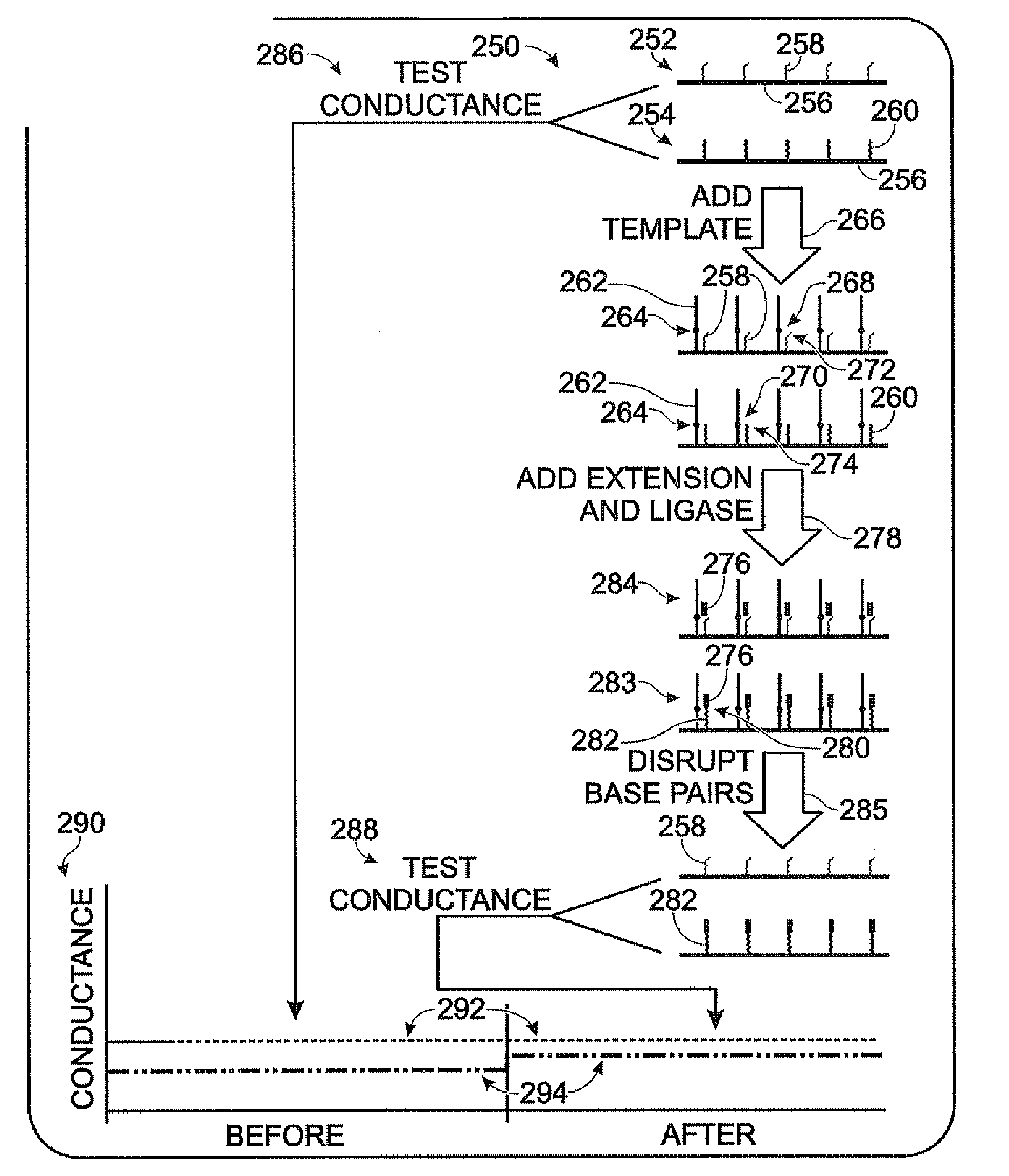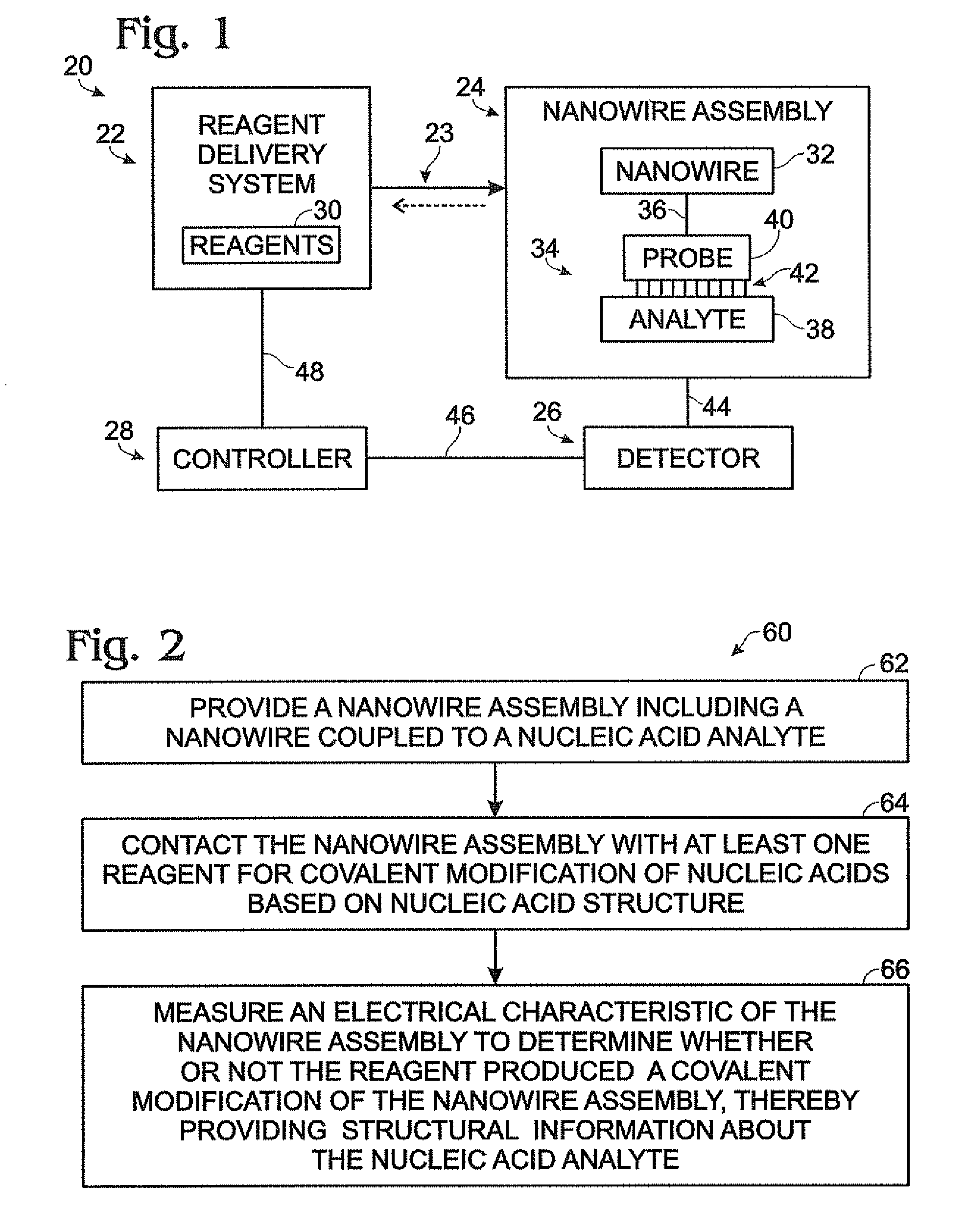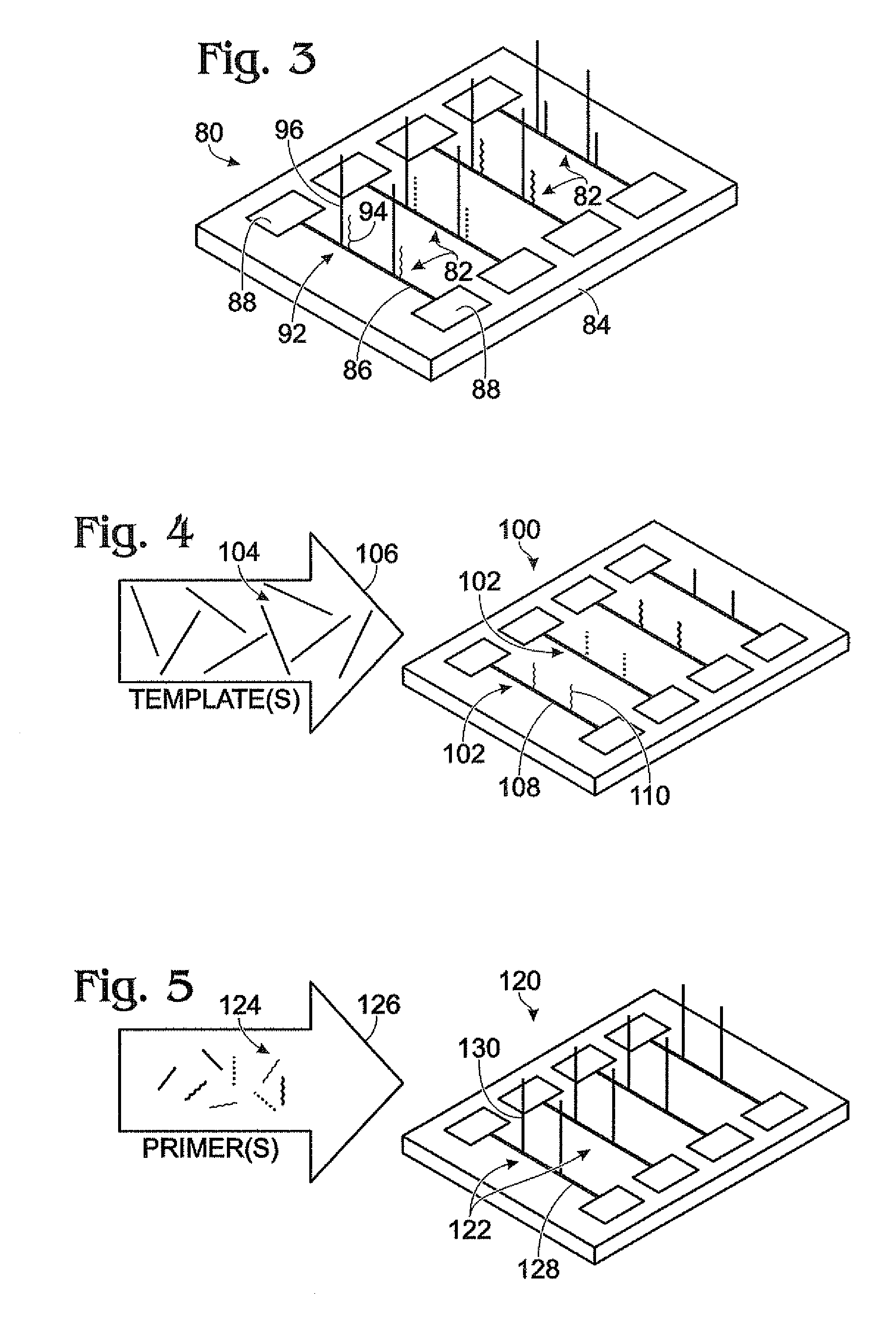Nanowire-Based System for Analysis of Nucleic Acids
a nucleic acid and nanowire technology, applied in the field of nanowire-based system for nucleic acid analysis, can solve the problem that current sequencing technology may be limited in its ability
- Summary
- Abstract
- Description
- Claims
- Application Information
AI Technical Summary
Benefits of technology
Problems solved by technology
Method used
Image
Examples
example 1
Nanowire Arrays
[0065]This example describes an exemplary array of nanowire assemblies; see FIG. 3.
[0066]Nanowire array 80 can include a plurality of nanowire assemblies 82 supported by a substrate 84. The nanowire assemblies can be disposed in a linear array on the substrate, as shown here, and / or in a two- (or three-) dimensional array.
[0067]Each nanowire assembly can include a nanowire 86 extending between spaced electrodes 88. The nanowire can be electrically coupled to the electrodes, so that current can pass between the electrodes through the nanowire. Exemplary electrodes can be formed of an electrically conductive material, generally a conductive metal(s) or metal alloy. In exemplary embodiments, the electrodes can be formed of gold. Electrodes can be formed on the substrate before or after placement of the nanowires. In exemplary embodiments, the electrodes can be formed by photolithography and / or ion beam lithography.
[0068]The substrate can have any suitable composition and...
example 2
Coupling Nucleic Acids to Nanowires
[0070]This example describes exemplary approaches for coupling nucleic acids to nanowires; see FIGS. 4 and 5.
[0071]FIG. 4 shows an exemplary array 100 of nanowire assemblies 102 prepared to receive template 104, shown by the arrow at 106. Each nanowire assembly can include a nanowire 108 and a different probe 110 coupled to the nanowire. The probes can be coupled to the nanowires before or after they are disposed in the array. Templates 104 can be placed in contact with the array and allowed to hybridize with the probes and / or can be coupled directly to the nanowires. Accordingly, the probes can be configured to select complementary templates from a nucleic acid mixture of templates and nontemplate species. After hybridization, unpaired templates (and nontemplate species) can be removed.
[0072]FIG. 5 shows an exemplary array 120 of nanowire assemblies 122 prepared to receive primers 124, shown by the arrow at 126. Each nanowire assembly can include ...
example 3
System for Nanowire-Based Sequencing
[0073]This example describes an exemplary system, including apparatus, method, and data, for nanowire-based sequencing; see FIGS. 6-8.
[0074]A system 140 for nanowire based sequencing can include a reagent delivery system 142 in fluid communication with a reaction compartment 144 holding an array 146 of nanowire assemblies 148. The system also can include a detector 150 electrically coupled (or couplable) to the array of nanowire assemblies, and a controller 152 in communication with the detector and the reagent delivery system.
[0075]Reagent delivery system 142 is configured to move fluid through reaction compartment 144 for contact with array 146. The reagent delivery system thus can include a plurality of fluid reagents 154 for covalent modification of nucleic acids, such as four different nucleoside triphosphates (dNTPs) 156, 158, 160, and 162, each disposed in an aqueous solution with DNA polymerase molecules 164. The fluid reagents also can in...
PUM
| Property | Measurement | Unit |
|---|---|---|
| lengths | aaaaa | aaaaa |
| lengths | aaaaa | aaaaa |
| lengths | aaaaa | aaaaa |
Abstract
Description
Claims
Application Information
 Login to View More
Login to View More - R&D
- Intellectual Property
- Life Sciences
- Materials
- Tech Scout
- Unparalleled Data Quality
- Higher Quality Content
- 60% Fewer Hallucinations
Browse by: Latest US Patents, China's latest patents, Technical Efficacy Thesaurus, Application Domain, Technology Topic, Popular Technical Reports.
© 2025 PatSnap. All rights reserved.Legal|Privacy policy|Modern Slavery Act Transparency Statement|Sitemap|About US| Contact US: help@patsnap.com



